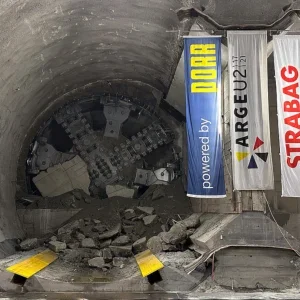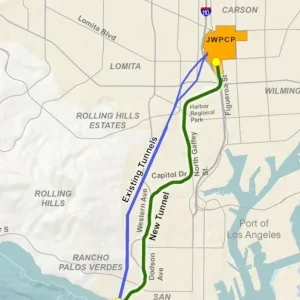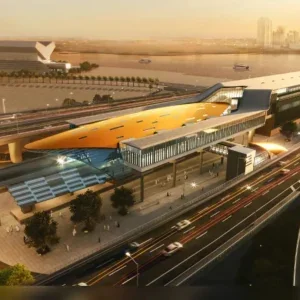Britain’s widest tunnel was declared a triumph for both tunnelling and for the country’s transport system by deputy prime minister John Prescott at the breakthrough ceremony on 8 June.
The £110m project is both ahead of schedule and £5m under budget.
The 166m2 cross-section North Downs Tunnel, south of Chatham and the Medway river in Kent, will carry twin tracks for the Channel Tunnel Rail Link, Britain’s first high-speed train line.
The 3.2km tunnel will be part of the phase one link carrying Eurostar TGV trains 74km from Londn St Pancras through to the Channel Tunnel entrance.
Pressure waves from the passing of two TGV trains demand the wide bore, carved through mainly competent chalk under Bluebell Hill. The deepest point is over 100m under the surface.
A Paurat roadheader punched its way through a remaining 800mm thickness of chalk halfway along the 3.2km long tunnel, watched by Prescott, the press, many of the workers who had built it and officials from Rail Link Engineering and Union Railways, client for the CTRL A pre-survey through a small borehole showed the drive to be just 19mm off line and 15mm off depth on the 1,500m length.
The breakthrough completed the top heading in the London-side bore. Two further benches are to be carved out over the next few months, bringing the bore to 14m high and 13.5m wide. Secondary lining work will continue in the 1500mm Country Side heading from which the breakthrough was seen.
Completion of the 250mm thick primary shotcrete lining on this side in record time put the project two months ahead of schedule said Leo Falkner, project manager for tunnels in the Eurolink contractors consortium. The consortium is made up of UK firm Miller, French partnership Dumez/GTM and Austrian firm Beton und Monierbau.
The Country Side heading will now receive a 350mm thick fibre reinforced concrete secondary lining, which will continue on into the other side as it reaches the mid-mark. A 2mm waterproof membrane separates the two linings.
Follow-on work by track and signalling contractors is being prepared and the tunnel is due to be ready for trains in 2003.







